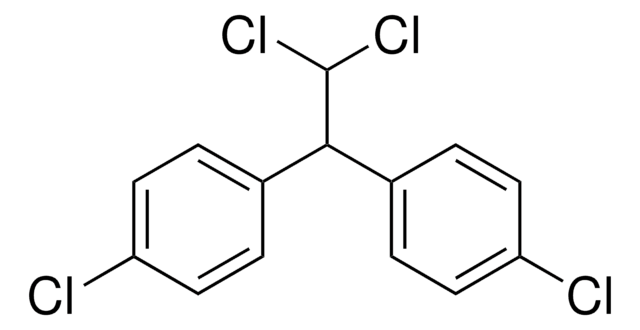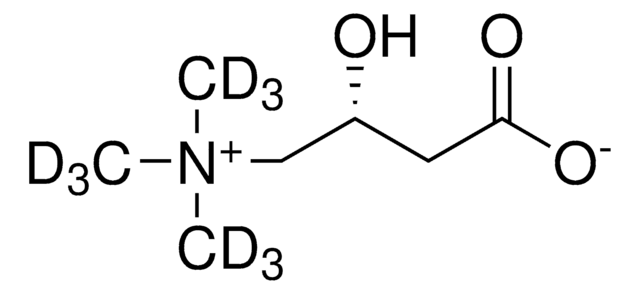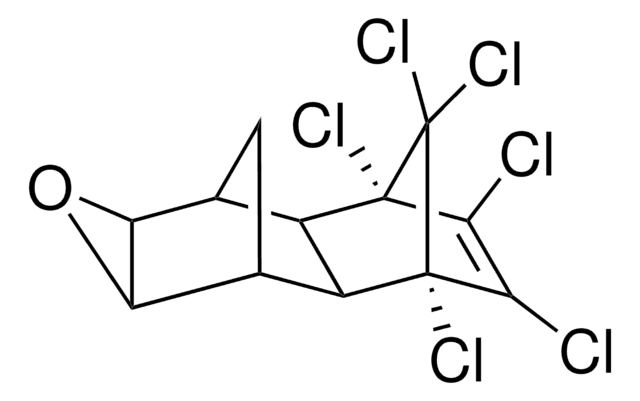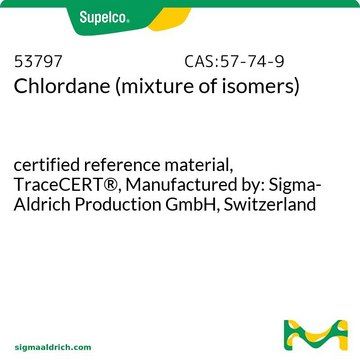442599
γ-Chlordane
PESTANAL®, analytical standard
Synonym(s):
trans-Chlordane
About This Item
Recommended Products
grade
analytical standard
product line
PESTANAL®
CofA
current certificate can be downloaded
packaging
ampule of 50 mg
technique(s)
HPLC: suitable
gas chromatography (GC): suitable
application(s)
agriculture
format
neat
storage temp.
2-8°C
SMILES string
ClC1=C(Cl)[C@@]2(Cl)[C@](C[C@@H](Cl)[C@@H]3Cl)([H])[C@]3([H])[C@]1(Cl)C2(Cl)Cl
InChI
1S/C10H6Cl8/c11-3-1-2-4(5(3)12)9(16)7(14)6(13)8(2,15)10(9,17)18/h2-5H,1H2/t2-,3+,4-,5-,8-,9+/m0/s1
InChI key
BIWJNBZANLAXMG-MPPHZFHBSA-N
Looking for similar products? Visit Product Comparison Guide
Related Categories
General description
Application
Legal Information
signalword
Danger
hcodes
Hazard Classifications
Acute Tox. 3 Oral - Acute Tox. 4 Inhalation - Aquatic Acute 1 - Aquatic Chronic 1 - Carc. 2
Storage Class
6.1C - Combustible acute toxic Cat.3 / toxic compounds or compounds which causing chronic effects
wgk_germany
WGK 3
flash_point_f
Not applicable
flash_point_c
Not applicable
Choose from one of the most recent versions:
Already Own This Product?
Find documentation for the products that you have recently purchased in the Document Library.
Protocols
US EPA Method 8081: GC Analysis of Organochlorine Pesticides on Equity®-5
Chromatograms
suitable for GCOur team of scientists has experience in all areas of research including Life Science, Material Science, Chemical Synthesis, Chromatography, Analytical and many others.
Contact Technical Service











